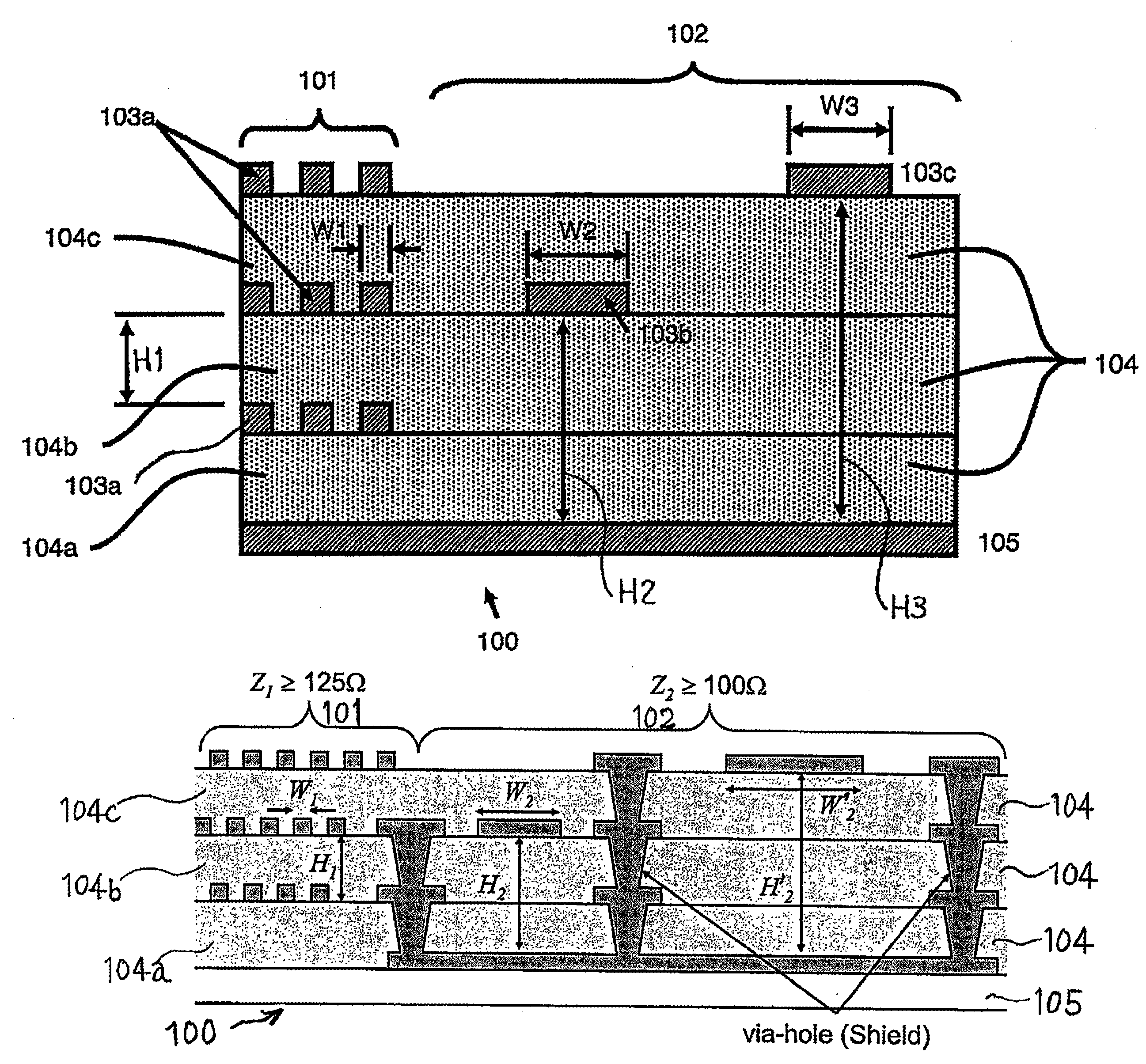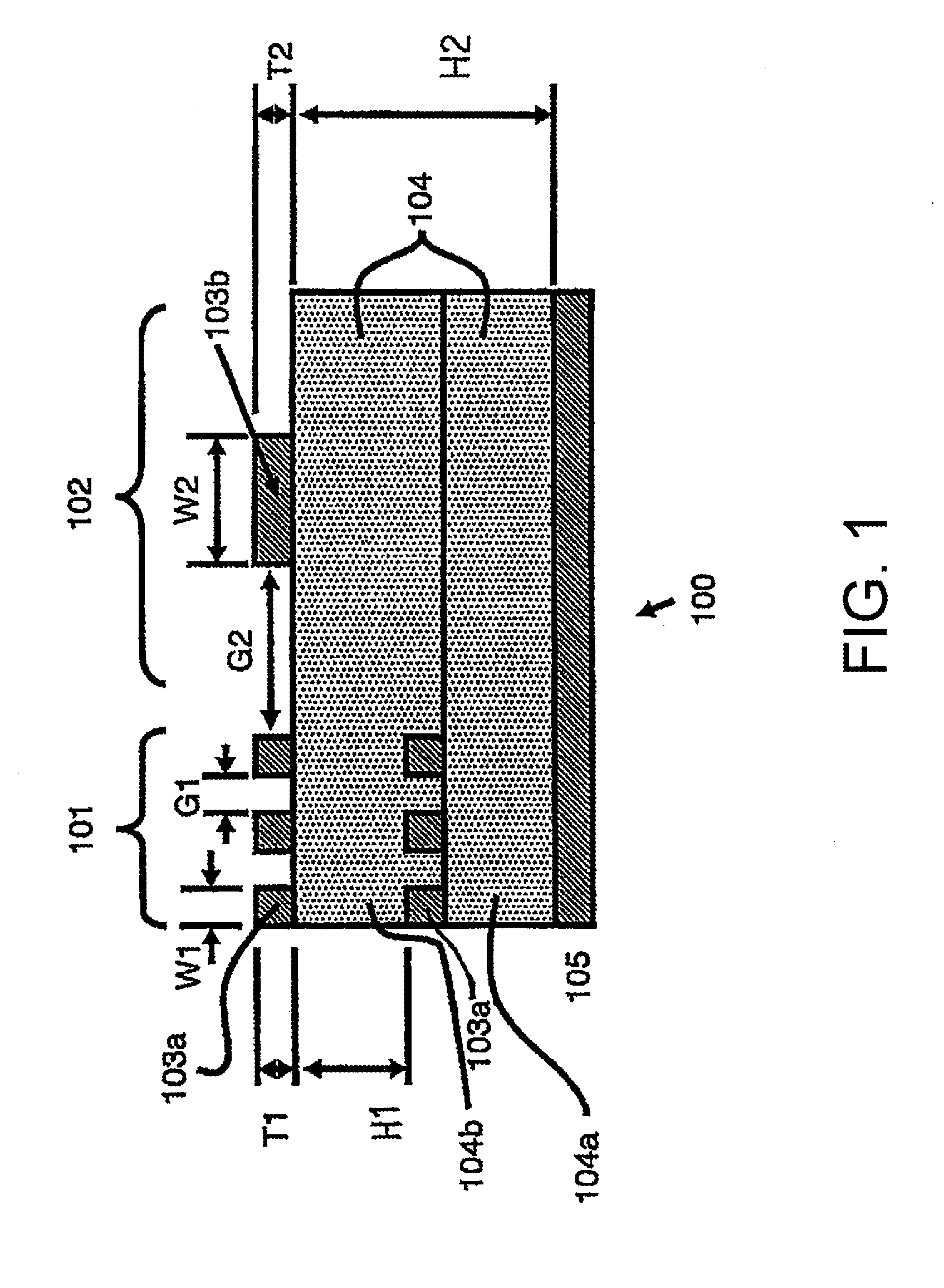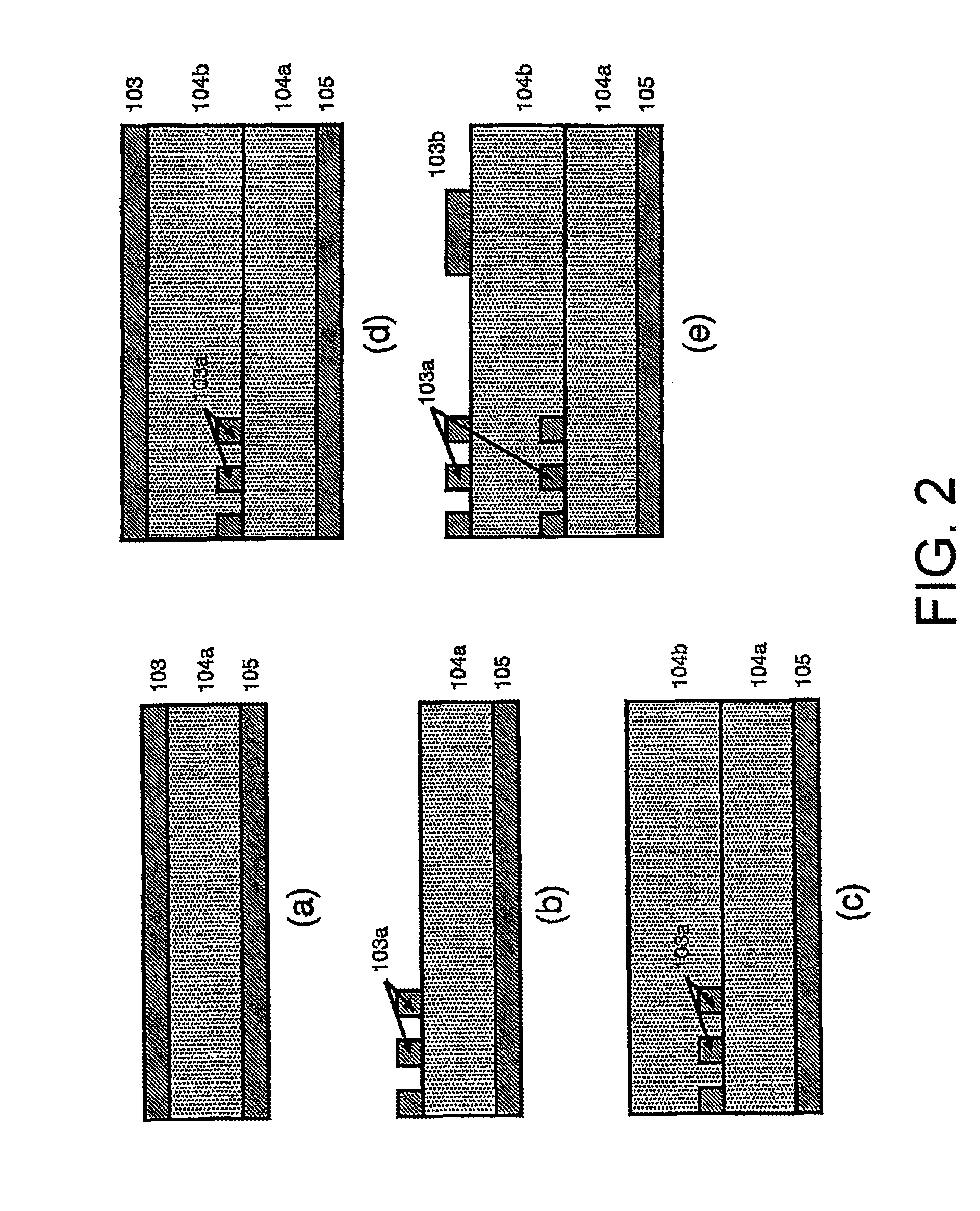Multilayer wiring board
a multi-layer wiring and mounting board technology, applied in the direction of semiconductor/solid-state device details, electrical apparatus construction details, printed circuit non-printed electric components, etc., can solve the problems of achieving the the transmission of high-frequency signals on the same board, and achieve the suppression of transmission signal degradation, high mounting density, and increase in signal line density
- Summary
- Abstract
- Description
- Claims
- Application Information
AI Technical Summary
Benefits of technology
Problems solved by technology
Method used
Image
Examples
example 1
[0059]Referring to FIG. 1, as the first wiring region 101 and the second wiring region 102 each having the multilayer wiring structure described in the above-mentioned first embodiment, a microstrip line structure in which the thickness H1 of the insulating layer 104b was 40 μm, the line width W1 of the wiring 103a was 104 μm, and the line thickness T1 of the wiring 103a was 12 μm and a microstrip line structure in which the thickness H2 of the insulating layer 104 was 80 μm, the line width W2 of the wiring 103b was 215 μm, and the line thickness T2 of the wiring 103b was 12 μm were respectively formed in the same board by the methods described in the above-mentioned first embodiment.
[0060]In this Example 1, the distance G1 between the wirings in the first wiring region 101 was 100 μm while the distance G2 between the wiring 103a in the first wiring region 101 and the wiring 103b in the second wiring region 102 was 150 μm. As the insulating layer 104, use was made of a polycycloolef...
example 2
[0074]Referring to FIG. 10, a description will be given of a multilayer wiring board 100 which is an Example combining the second and third embodiments described with reference to FIGS. 3 and 4. This multilayer wiring board 100 can be called a high-impedance printed wiring board with a plurality of dielectric thicknesses mixed and its structure has, in the single printed wiring board 100, a region that can transmit an ultrahigh-frequency signal in a GHz band, particularly of 10 GHz or more, with a low consumption power, while suppressing a reduction in mounting density to minimum.
[0075]Features of this high-impedance printed wiring board with the plurality of dielectric thicknesses mixed are summarized as follows.
[0076]A) The single printed wiring board 100 has a high-density mounting region 101 for transmitting a low-frequency DC power supply of 1 GHz or less and a high-frequency transmission region 102 that can achieve high-frequency transmission exceeding 1 GHz with a low loss.
[0...
PUM
 Login to View More
Login to View More Abstract
Description
Claims
Application Information
 Login to View More
Login to View More - R&D
- Intellectual Property
- Life Sciences
- Materials
- Tech Scout
- Unparalleled Data Quality
- Higher Quality Content
- 60% Fewer Hallucinations
Browse by: Latest US Patents, China's latest patents, Technical Efficacy Thesaurus, Application Domain, Technology Topic, Popular Technical Reports.
© 2025 PatSnap. All rights reserved.Legal|Privacy policy|Modern Slavery Act Transparency Statement|Sitemap|About US| Contact US: help@patsnap.com



